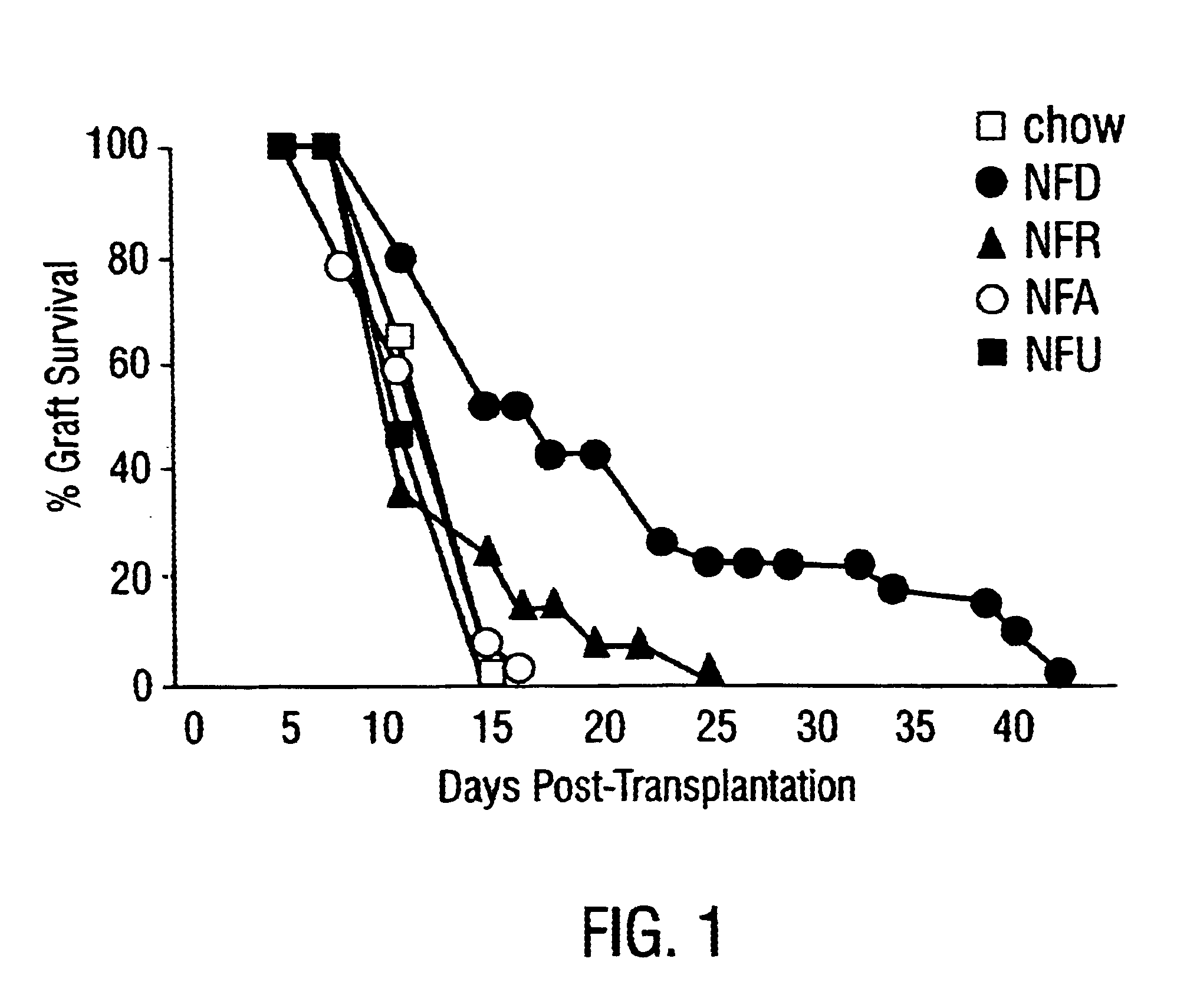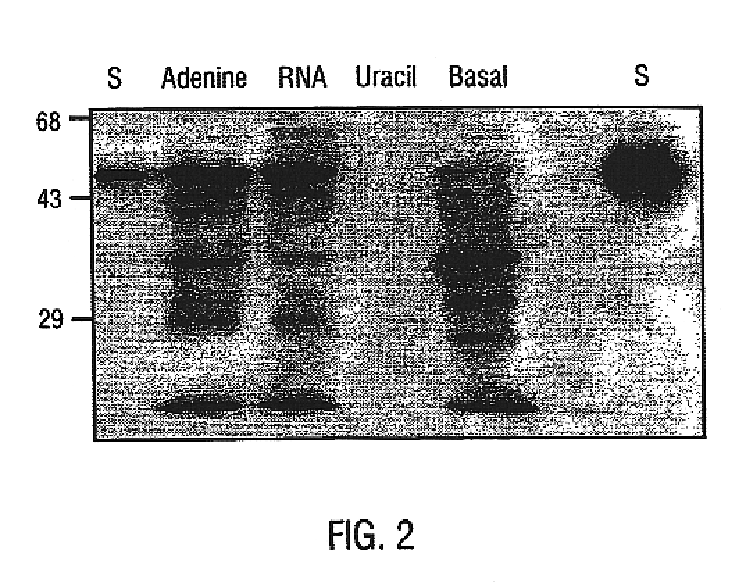Immunosupportive drug sparing diet
a technology of immunosuppressive diet and drug, applied in the field of nutritional medicine, can solve the problems of decreased drug bioavailability, non-specific systemic effects, inadequate methods, etc., and achieve the effect of enhancing the immunosuppressive potency of a subtherapeutic dos
- Summary
- Abstract
- Description
- Claims
- Application Information
AI Technical Summary
Benefits of technology
Problems solved by technology
Method used
Image
Examples
example 1
5.1 Example 1
A Nucleotide Free Diet Increase the Efficacy of Cyclosporine Treatment to Prevent Graft Rejection
This Example describes the use of nucleotide free diets to suppress immune responsiveness in conjunction with the immunosuppressive drug cyclosporine to block rejection of a newborn murine cardiac allograft.
A NFD was documented to significantly enhance survival of the murine cardiac allograft. Intriguingly, a dose of cyclosporine, which was subtherapeutic in a chow-fed or RNA-supplemented host, was synergistically immunosuppressive when combined with NFD, prolonging survival beyond that in the NFD group without cyclosporine (FIG. 1).
Recent investigations, have documented that dietary RNA is required for normal enterocyte maturation and development either in vitro culture systems or in animals (He et al., 1993; Leiliko et al., 1987). Maturational gut enzymes, such as alkaline phosphatase and maltase are depressed in the intestines of animals maintained on NFD. Stable isotope ...
example 2
5.2 Example 2
Nucleotide Diet Supplemented With Uracil Decreases Expression of P450
BALB / c mice were maintained for three weeks on a casein-based nucleotide free diet (NFD) or the same diet supplemented with 0.25% RNA(NFR), 0.06% adenine (NFA), or 0.06% uracil (NFU) (percentage by weight). These are the doses of RNA and uracil previously documented to maintain immune responsiveness (Kulkarni et al., 1986; Kulkarni et al., 1992), and this is the dietary conditioning period previously documented to effect an alteration immune function with NFD. Following maintenance on diets mice were sacrificed and P450 levels were quantitated by Western blot analysis of homogenates of liver, jejunum, and ileum for each dietary group. The gut isoenzyme for P450, CyP3A2, was suppressed in mice on NFD, but maintained in mice with diets supplemented with 0.25% RNA or 0.06% adenine (FIG. 2). This corresponds to the previously documented ability of RNA or purines to lead to normal gut development (Leiliko e...
example 3
5.3 Example 3
Effect of Nucleotide Dosage on P450 Expression
BALB / c mice are maintained on one of twelve experimental diets for three weeks prior to sacrifice. Dietary groups (10 mice / group) include casein-based nucleotide free diet (NFD), NFD supplemented with a range of RNA (NFR), uracil (NFU), or adenine (NFA) with doses extending from one log below to twice one log above the previously studied dose (0.06%). Four separate doses are studied for RNA or the respective nucleobases. Following maintenance on diet for three weeks, mice are sacrificed, and duodenum, jejunum, ileum and liver homogenized and processed for Western blot analysis of the presence of the P450 isoenzyme CyP3A2 as detected in microsomal fractions of tissues.
A portion of each specimen is quantitatively analyzed for P450 enzyme by spectrophotometric analysis predicated on the spectrum shift in a CO bubble cubette. Enzyme activity is measured by P450 biotin metabolism.
PUM
| Property | Measurement | Unit |
|---|---|---|
| nutritional composition | aaaaa | aaaaa |
| length | aaaaa | aaaaa |
| solubility | aaaaa | aaaaa |
Abstract
Description
Claims
Application Information
 Login to View More
Login to View More - R&D
- Intellectual Property
- Life Sciences
- Materials
- Tech Scout
- Unparalleled Data Quality
- Higher Quality Content
- 60% Fewer Hallucinations
Browse by: Latest US Patents, China's latest patents, Technical Efficacy Thesaurus, Application Domain, Technology Topic, Popular Technical Reports.
© 2025 PatSnap. All rights reserved.Legal|Privacy policy|Modern Slavery Act Transparency Statement|Sitemap|About US| Contact US: help@patsnap.com



